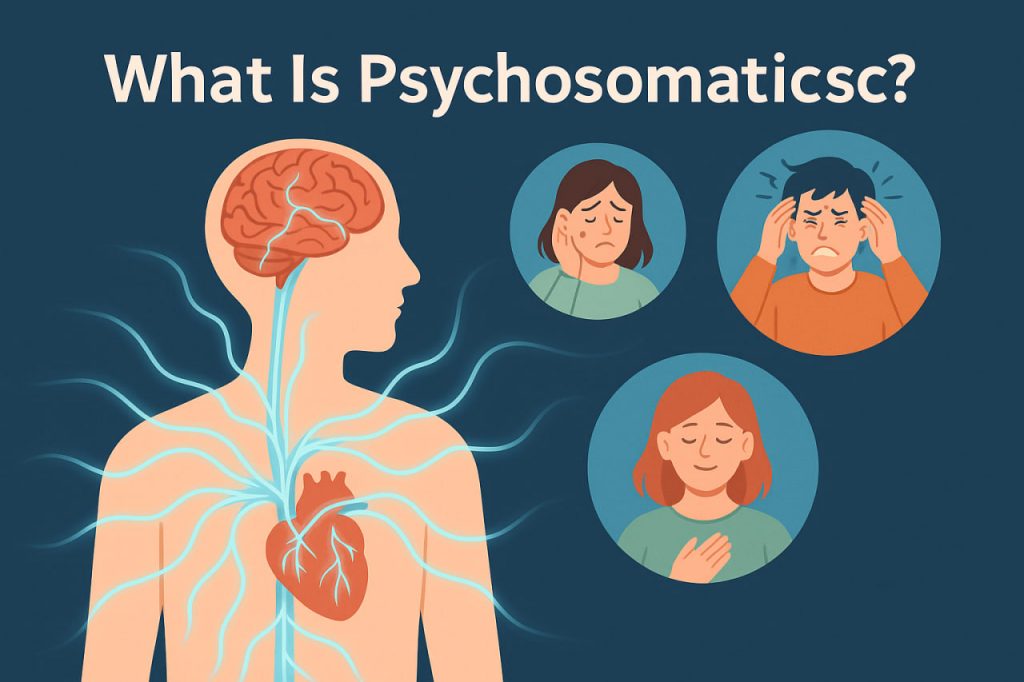Psychosomatics is a branch of medicine and psychology that studies the connection between the mind (psyche) and body (soma). It explores how emotional and psychological states can influence or even cause physical health problems. The word “psychosomatic” is often misunderstood, but it does not mean an illness is imagined—it means the symptoms have both mental and physical components.
How the Mind Affects the Body
The human brain controls many automatic functions in the body such as heart rate, digestion, and immune responses. When someone experiences prolonged stress, anxiety, or unresolved emotional trauma, these mental states can trigger real physical changes through:
- Hormonal imbalances
- Nervous system overactivity
- Weakened immune defense
- Muscle tension and inflammation
Over time, these effects can contribute to physical conditions such as headaches, digestive disorders, chronic pain, and even heart problems.
Common Psychosomatic Symptoms
People suffering from psychosomatic disorders may experience:
- Chronic fatigue
- Stomach pain or nausea without a medical cause
- Skin rashes during emotional stress
- Tension headaches or migraines
- Palpitations or chest pain
- Shortness of breath, especially during anxiety
These symptoms are real and often distressing, even if medical tests show no specific physical illness.
Psychosomatic Illnesses vs. Mental Illness
It’s important to distinguish between:
- Psychosomatic illness: Physical symptoms caused or worsened by mental/emotional factors
- Mental illness: Disorders like depression, PTSD, or schizophrenia that primarily affect mood, thought, or behavior
Someone with a psychosomatic condition may not have a psychiatric disorder, but they still need support to address the emotional roots of their symptoms.
Causes of Psychosomatic Reactions
Common psychological triggers include:
- Chronic stress
- Suppressed emotions
- Past trauma
- Unhealthy coping mechanisms
- Lack of emotional expression
When feelings like grief, anger, or fear are ignored or repressed, they may be “stored” in the body and eventually manifest as physical ailments.
Treatment Approaches
Healing psychosomatic conditions involves a holistic approach, addressing both the mind and body:
- Psychotherapy (especially cognitive-behavioral therapy)
- Stress management (breathing exercises, meditation)
- Physical activity to release built-up tension
- Medication (when needed for symptoms or underlying conditions)
- Art, music, or expressive therapy for emotional release
Conclusion
Psychosomatics reminds us that mental health is deeply connected to physical health. While not all physical problems are caused by stress, many are influenced by our emotional state. Understanding this link can lead to more effective healing and a deeper awareness of ourselves.
Glossary
- Psychosomatic: Related to the interaction of mind and body in illness
- Somatic: Pertaining to the body
- Holistic: Treating the whole person—mind, body, and emotions
- Cognitive-behavioral therapy (CBT): A type of talk therapy that helps identify and change negative thought patterns


